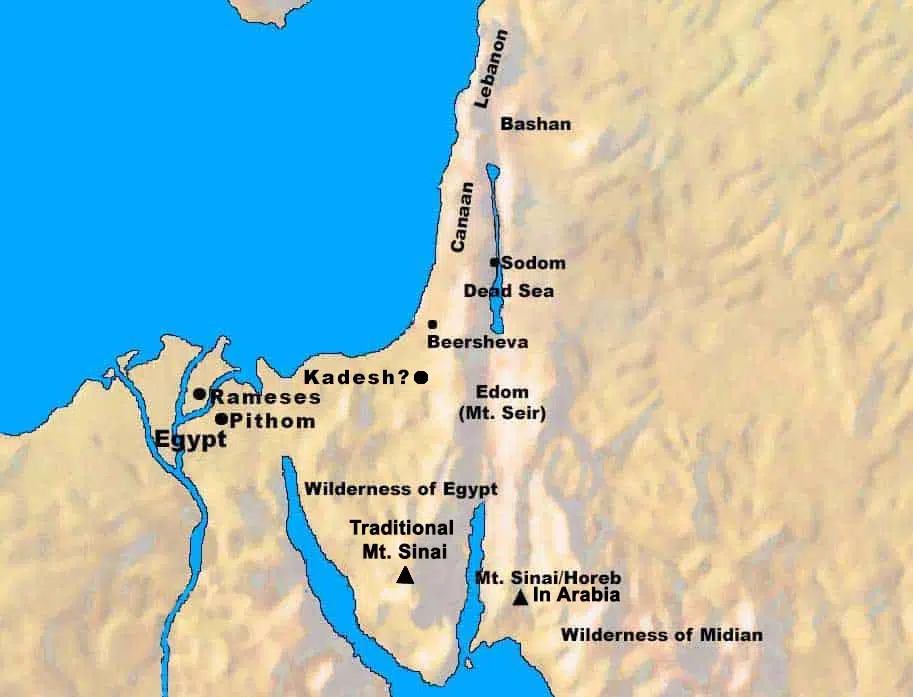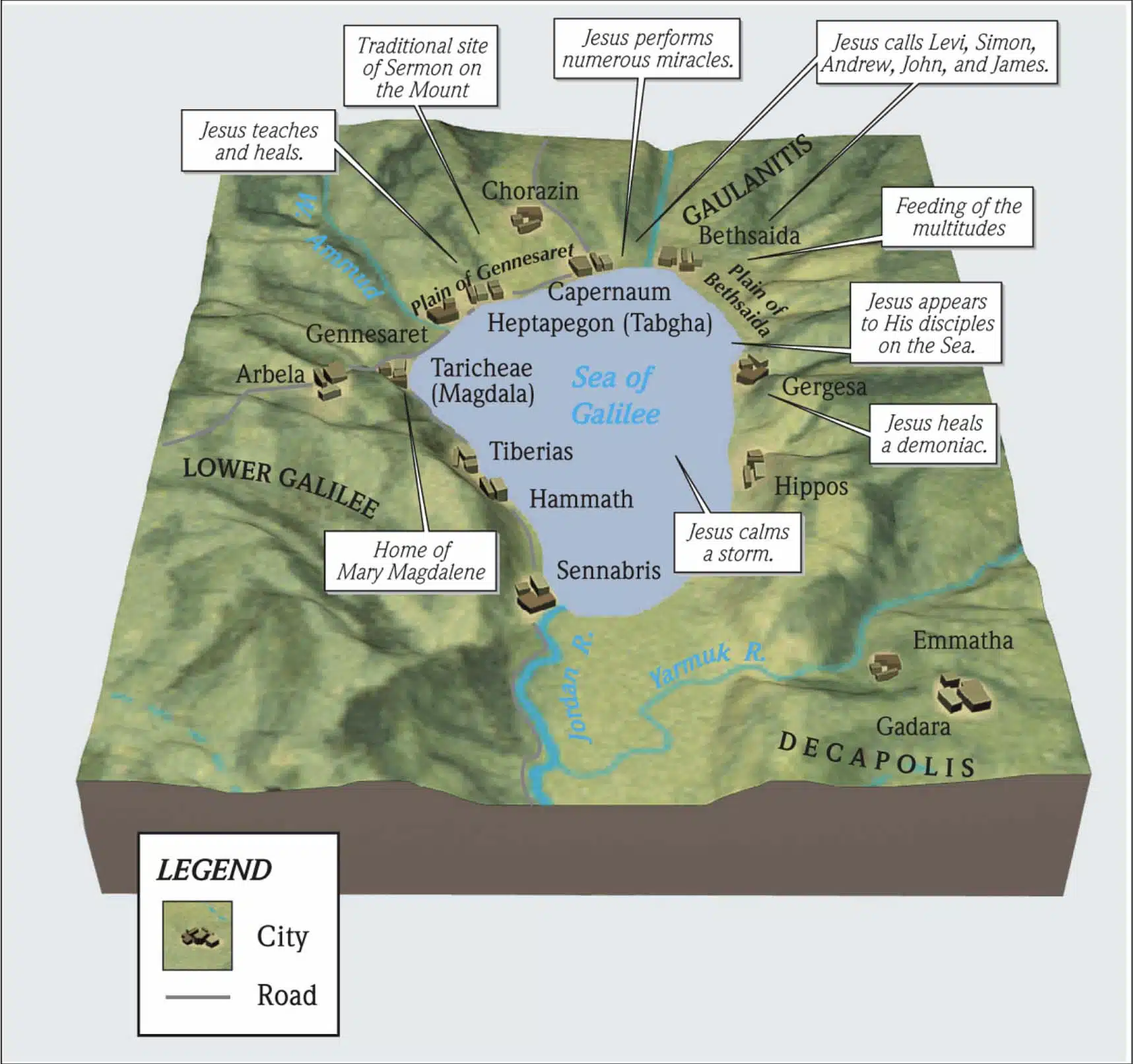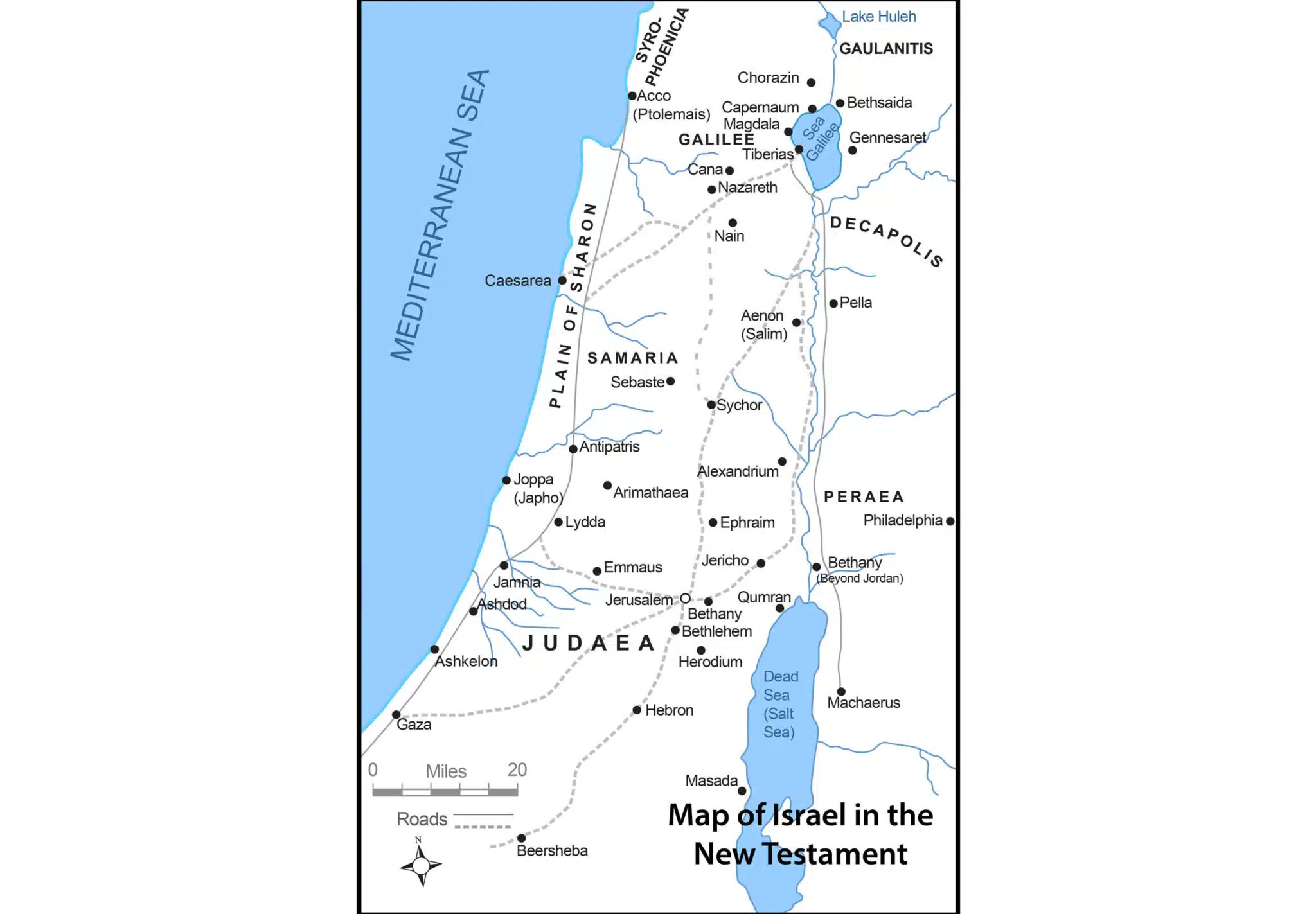Matthew cites the generations between Perez, who lived in Canaan prior to moving to Egypt, and Nahshon who was numbered in those coming out of Egypt, naming some but omitting most.
The parallel account of this genealogical record is found in Luke 3:32-33.
Perez was the son of Judah, grandson of Jacob, who was renamed Israel. Perez was born of Judah and Tamar. Perez’s son, Hezron, was the tribal ancestor of the Hezronites. (See Numbers 26:21 and 1 Chronicles 2:18-24.) The Hezronites were a Hebrew clan from the tribes of Judah and Reuben.
Occasionally in his genealogy, Matthew skips one or more generations. Such is the case between the generations of Perez and Salmon. All of the generations between Perez and Amminadab, Salmon’s grandfather, would likely have lived in Egypt while the children of Israel greatly multiplied in number. The story of the birth of Perez by Judah and Tamar appears just after the narrative where Joseph was sold into slavery by his brothers. Perez’s birth took place while Judah’s family still lived in Canaan, prior to moving to Egypt with his family to escape the famine (Genesis 38, 46).
Nahshan the son of Amminadab is numbered in the census taken of Israel when they came out of Egypt (Numbers 1:7; 2:3). Thus there is roughly a four-hundred year gap between Perez and Nahshon (Exodus 12:40). Within this time period Matthew only names Perez, Hezron, Ram, Amminadab, and Nahshon. 1 Chronicles 2:9,25-27 names two additional generations: Jerahmeel, who was Ram’s father; and then Ram’s three sons. This brings the total generations from Perez, who moved to Egypt, to Nahshon, who left Egypt, to no fewer than seven. The family remained in Egypt for 430 years (Exodus 12:40).
If there were seven generations from Perez to Nahshan, and assuming forty years for each generation, this would account for 280 of the 430 years time frame that the Israelites remained in Egypt. So either additional generations are omitted, or each generation spanned roughly sixty one years, or some combination, in order to cover the entire 430 year period.
Matthew appears to mostly follow the summarized genealogy from 1 Chronicles 2:9-12.
“Now the sons of Hezron, who were born to him were Jerahmeel, Ram and Chelubai. Ram became the father of Amminadab, and Amminadab became the father of Nahshon, leader of the sons of Judah; Nahshon became the father of Salma, Salma became the father of Boaz, Boaz became the father of Obed, and Obed became the father of Jesse.”
Ram was Hezron’s grandson. According to 1 Chronicles 2:25, Ram was the firstborn son of Hezron’s firstborn son, Jerahmeel (whom Matthew does not list.) 1 Chronicles 2:27 tells us that the sons of Ram were Maaz, Jamin, and Eker. Matthew does not mention these sons in his Genealogy of Jesus. Neither Matthew, Chronicles, nor anywhere else in the Bible tells us about the generations between Ram and his descendant, Amminidab. The son of Amminidab is Nahshon, who is named in the census in Numbers 1:7.
The Bible does not tell us who Amminidab’s direct father was, but Amminidab lived during the time of Pharaoh’s cruelty and enslavement of Israel. He witnessed God’s wonders and participated in Israel’s Exodus from Egypt. Amminidab was the father-in-law of Aaron, the High Priest. (Exodus 6:23) Amminidab’s son, Nahshon, (Aaron’s brother-in-law) was listed as Judah’s tribal leader in Numbers 1:7.
The Old Testament gives two different spellings of Nahshon’s son: Salmon or “Salma.” Salmon lived during the period of Israel’s Conquest of the Promised Land.
Indeed, the very next verse says that Salmon begot Boaz by Rahab, who lived in Jericho when Israel first moved into Canaan. Additionally, 1 Chronicles 2:51 and 2:54 says that Salma was the father of his son Bethlehem. The Judean town, Bethlehem, is named after Salma’s son. This town is the birthplace of Salma’s descendants; Boaz, King David, and Jesus the Messiah all hail from this town.
Biblical Text
3 Perez was the father of Hezron, and Hezron the father of Ram. 4 Ram was the father of Amminadab, Amminadab the father of Nahshon, and Nahshon the father of Salmon.
Check out our other commentaries:
-
Romans 11:9-12 meaning
Israel has not been cast aside forever. They have sinned, but through their sin God is ushering the Gentiles into salvation. In part, God has...... -
Matthew 2:19-23 meaning
After King Herod dies, an angel informs Joseph by dream that it is safe to return to Israel. Joseph obeys, but is careful to avoid...... -
Ecclesiastes 8:14-15 meaning
Submission to God, rather than trying to make sense of the world through human experience, allows Solomon to enjoy and appreciate the best life has...... -
Matthew 9:27-31 meaning
Two blind men follow Jesus, begging Him to heal them. They call Jesus by the Messianic title, “Son of David.” Jesus privately heals them according...... -
Proverbs 2:1-5 meaning
Continuing his introduction to The Book of Proverbs, Solomon uses cause-and-effect descriptions to communicate the value and benefit of wisdom......





